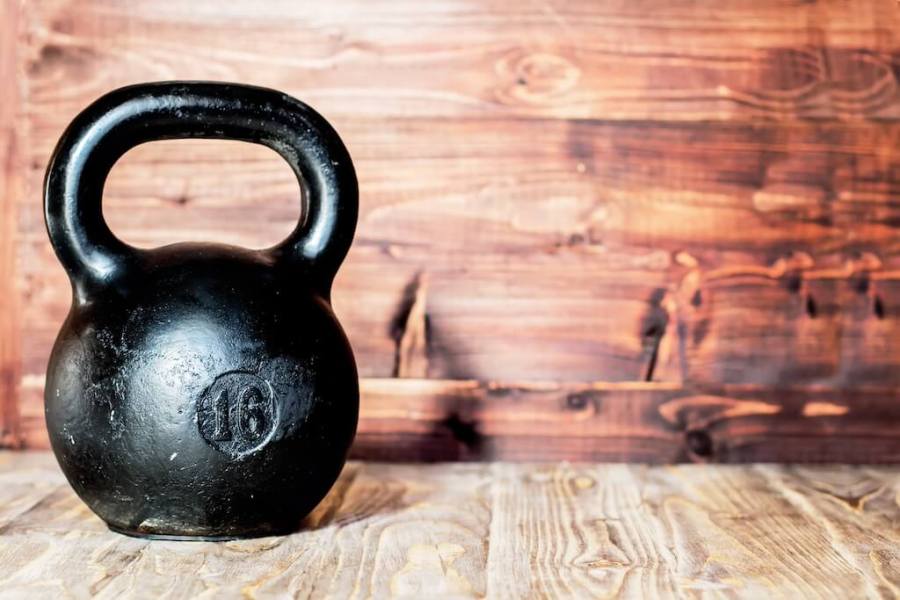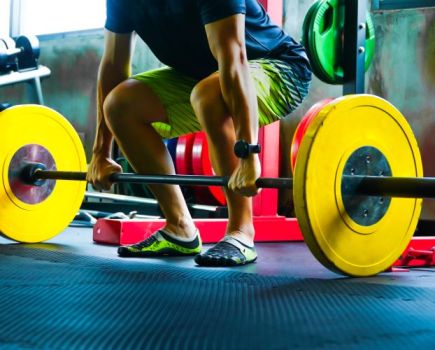Strength and conditioning coach Mayyah Blair outlines the fundamental benefits of kettlebells…
The gym is an overwhelming space for the uninitiated, but even regular gym-goers can be left scratching their heads when it comes to differentiating between the pros and cons of the different machines and free weights. Search online and you’re sure to see various opinions on why a specific type of equipment (be it dumbbells, barbells or the best kettlebells) is superior to all the rest, but the reality is that to achieve your fitness goals you probably want to use a mixture of all three.
“The belief that you can do absolutely everything with a kettlebell, barbell or dumbbell just isn’t right,” says Mayyah Blair, strength and conditioning coach at Commando Temple. “If I was to choose one item that I could train with forever though – apart from my own bodyweight – it would be a kettlebell.”
Here, the OLF Extreme Kettlebell-certified instructor shares the benefits of kettlebells and why they have the upper hand on other weight room staples.
6 benefits of kettlebells
1. Versatile training tool
Exercises fall into five fundamental movements – push, pull, squat, hinge, and carry – and Blair says you can do them all with a kettlebell:
“There are very few moves that you can’t do with a kettlebell that you could do with a dumbbell or a barbell. If you’re looking to get extremely good at powerlifting, for example, you’re not going to achieve that just with the kettlebell, but you can do so many of your accessory exercises with them. You can work on higher rep ranges, and work your conditioning.”
She adds that their versatility makes them great for devising a workout routine like every-minute-on-the-minute (EMOM) sessions and monitoring progression, too: “As you get fitter, you can increase the number of minutes that you might be performing your swings or your squats for or you can increase the number of reps.”
2. Strengthens stabilising muscles
Even if you’re looking to get extremely good at powerlifting, one of the main benefits of kettlebells is that they can help to boost your squat, press, and deadlift by strengthening the stabilising muscles required during a compound lift.
“If you’re doing a barbell military press or a barbell jerk, for example,” says Blair, “your shoulders, hands, wrists, and elbows are moving upwards at the same rate and same speed and a lot of the stabilisation has gone through the gripping of the bar. If you’re doing those movements with a kettlebell, many of those stabilising muscles around the shoulders, wrists and hands are working extremely hard throughout that movement.”
3. Burns calories
Not only can kettlebells make you strong, but an interval session is a full-on cardio workout too. A 2010 study found that during a 20-minute kettlebell snatch interval workout (15 seconds on, 15 seconds rest, repeat), participants burned on average 20.2 calories per minute, with one of the lead authors noting that the calories burned is the equivalent to running a 6-minute mile pace.
Blair explains that it’s because unlike running or rowing, kettlebells enable you to sustain higher heart rates for longer: “You’re able to maintain your heart rate at around 80% of your max heart rate for periods of around three to five minutes.”
4. Great for sedentary lifestyles
Working at a desk for long hours plays havoc with your posture – particularly if you don’t have an ergonomic set-up – but Blair says that the humble kettlebell swing can undo all of the issues and provide protection against common aches and pains:
“It benefits pretty much everybody who has any kind of sedentary job and it’s a really simple way of getting extremely fit and strong, and it addresses a lot of the postural issues you might have from being seated all day.
“You’re working the entire posterior chain, right the way from your upper back through gripping that kettlebell correctly; all the way down the spine, the erectors of the spine, the glutes and the hamstrings.”
5. Highlights weaknesses
While a kettlebell can be held in two hands for goblet squats and swings, another benefit of kettlebells is that when used unilaterally (aka single-sided), they’re great at highlighting any imbalances or weaknesses.
“For example, with a military press,” says Blair, “it’s normal for somebody to be able to press two to eight kilos more on their dominant side. I’m right-handed, so I might be able to press 22kg on my right arm but I’m getting stuck at 18 on the left.
“That’s not a sign of an injury, but it is a sign that all of the stabilising muscles and my ability to move in those nuanced ways to get the kettlebell overhead are just better developed on the right side than on the left. We can address that by getting people to focus on that, and activate muscles that aren’t working in the ways we want them to.”
6. Less intimidating
Blair believes that the final benefit of kettlebells is that they seem less intimidating – particularly for newbies to the weights room:
“A lot of people’s first view of a barbell will come from bodybuilders, powerlifters, and people who they believe to be stronger than they are, especially when they’re starting out. But [a kettlebell is] a relatively small lump of metal – it’s not daunting.”
What’s more, they’re smaller and so easier to store than barbells and dumbbells, so are perfect for anyone looking to get a weight or two for working out at home.
Related content







